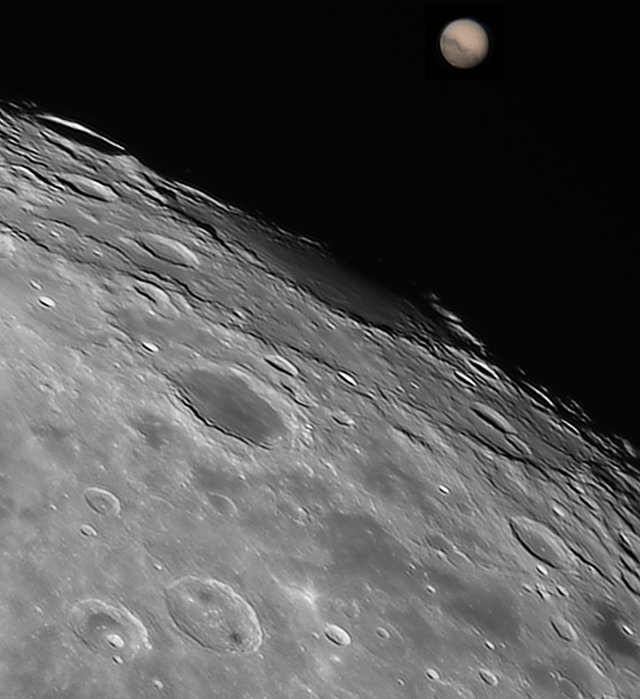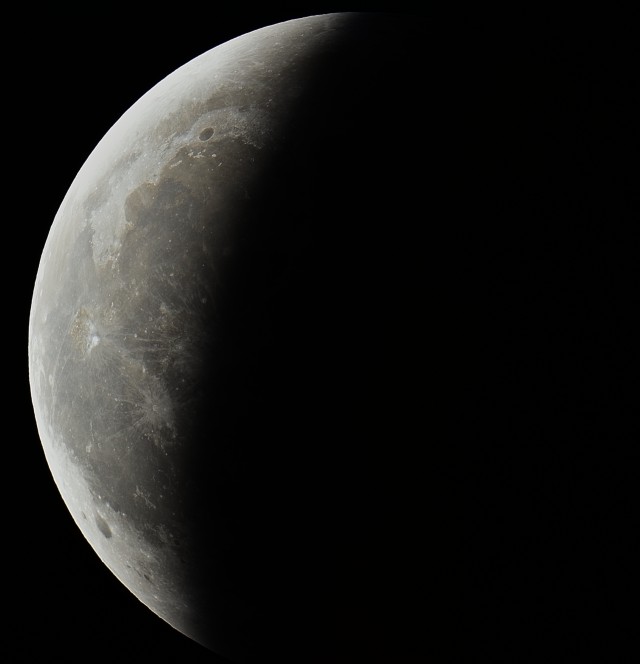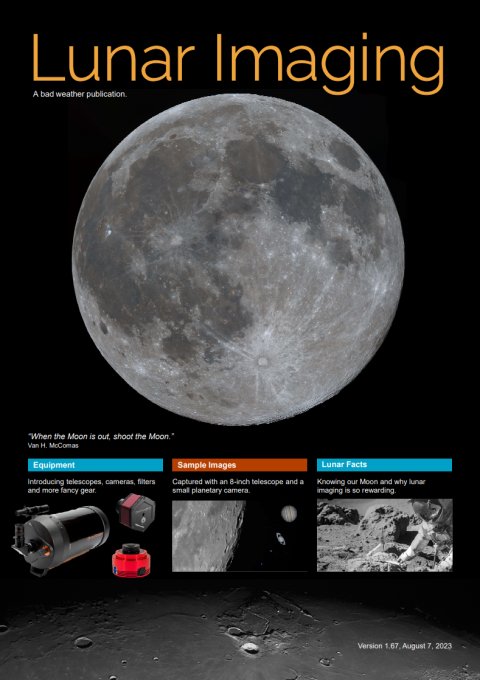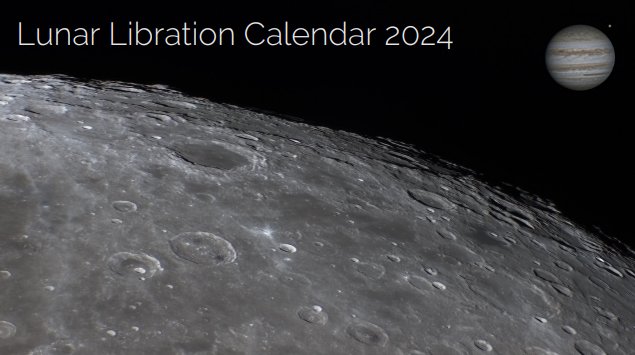Lunar Imaging
This is work in progress. The author is still collecting practical experience which is time consuming because of persisting unfavorable weather.
Once you took a photo of the Moon you are done. Not exactly, because of the lunar phases changing illumination angles from either east or west cast various shadows giving lunar regions a different face of this enticing target every time. Achievable image quality strongly depends on atmospheric condition in that you can almost always improve over your previous images on a later date.
As Apollo 11 astronaut Buzz Aldrin marvelled, "It's a bleak beauty".
Lunar Imaging App
Fascinating Features The Moon is about a quarter the diameter of Earth but exhibits extreme natural and geological dimensions. Some peaks of the rugged mountain chain Montes Apenninus rise as high as 5 kilometers (3 miles) casting long shadows. Crater Copernicus is 3.8 kilometers (2.36 miles) deep as are many more, wide or small. Rupes Altai is an escarpment located south of Mare Nectaris stretching over 420 kilometers (260 miles). Most craters contain a dozen or more craterlets and have central peaks casting shadows. Under the right illumination and timing stunning pictures of such features are possible -- the exciting side of lunar photography.
Libration Thanks to the moon's libration (wobbling effect), 59% of its surface is observable from Earth (of course 50% at a time). The maximum libration angle is: 1.54° (equator to ecliptic inclination) plus 5.15° (ecliptic to orbital plane inclination) = 6.69°. Libration occurs in both lunar latitude and longitude and at times brings far side features or parts of them into view, such as the entire Mare Humboldtianum at the northeastern edge above the better known Mare Crisium.
Varying Distance Since the lunar orbit around Earth is of elliptical shape its distance to Earth changes strictly speaking every second (orbital speed = 1.022km/sec). When reaching its closest orbit location the distance is around 356,400 kilometers (222,025 miles) while the farest point is at around 406,700 kilometers (251,903 miles), after all a difference of 50,300 kilometers (31,255 miles), or almost 14.5 times the lunar diameter. Consequently, when nearest, the Moon shines intrinsically brighter allowing shorter exposure times (the full moon then is around 30% brighter than average). When nearest the Moon is also apparently larger therefore better positioned for imaging, however, we may be splitting hairs since seeing is the more dominant factor influencing the resolution and quality of our images.
Eclipses The Moon's apparent size is about the same as that of the Sun which is 400 times further away but also 400 times larger. The distances of both vary in that the Moon can cover the Sun almost completely during a total solar eclipse or partly during an annular eclipse. During a partial solar eclipse, the Moon obstructs only part of the Sun's disk. A lunar eclipse occurs when the Earth moves in between and on the line of sight of the Sun and the Moon, in other words, when the Moon moves into the Earth's shadow. During such an event sunlight is being blocked by the Earth while the only light reaching the Moon is sunlight refracted by Earth's atmosphere band-passing reddish color.
 Mare Humboldtianum (in infrared) at favorable libration in longitude. Mars of the same evening on October 2nd., 2020 is inserted to scale.
Mare Humboldtianum (in infrared) at favorable libration in longitude. Mars of the same evening on October 2nd., 2020 is inserted to scale.
 'Super Moon' Lunar eclipse of May 26, 2021
'Super Moon' Lunar eclipse of May 26, 2021




